[앞다리살]The Most Inspirational Sources Of Injury Compensation Claim
13
2022.12.27 19:17
짧은주소
본문
How to File a Personal Injury Claim
In a personal injury claim an individual may be entitled to compensation for pain and suffering caused by the injury. There are many reasons to file a personal injury claim. This includes injuries to the body, mind, and emotions. Most commonly, it is the result of a tort (lawsuit) that results in damage to the body, mind, and emotions.
Injured person may be entitled to compensation for suffering and pain
personal injury lawsuit injury cases may include compensation for pain and suffering. This is a critical component of a complete recovery. The amount of pain and suffering an individual experiences during recovery depends on several factors, including the duration of recovery. The longer the duration of recovery the greater the suffering and pain will be. Recovery can range from a few weeks to several years.
In addition to physical pain, one can also be suffering from psychological stress. This could be a result of guilt, shame, anxiety or even depression. While physical pain is the most tangible manifestation of suffering and pain psychological distress is a more abstract and intangible component. A serious injury that has affected a person's ability or ability to do their daily tasks can result in compensation for pain and suffering.
It is difficult to determine the amount of money needed to cover the suffering and pain. Since no two accidents are alike, the compensation granted will differ based on the nature and severity of the injury. Every person will experience the injury in a different way, therefore the amount of compensation awarded will be contingent on the degree of the injury and the extent to which the suffering and pain has affected a person's life.
The most frequent types of personal injury cases include suffering and pain. These damages typically cover the compensation for emotional and mental anxiety. The amount of compensation for pain and suffering is usually more than the actual damages in dollars. The amount awarded will be in accordance with the extent of the sufferer's pain, including any emotional or mental suffering.
There are a myriad of factors that affect the amount of compensation for suffering and pain. Some states have limits on the non-economic damages that are given. In these states, compensation for pain and suffering must be calculated separately from damages awarded to physical injuries. A plaintiff can file a general damages claim in lieu of a lawsuit for pain and suffering.
Causation
Your personal injury claim will be void without evidence of the causation. This is because your claim will succeed if you prove that the defendant's conduct caused the injuries. A police report is the primary step in proving the cause in a personal-injury case. The police report will contain specific information regarding the accident, and personal injury compensation may also mention the defendant's negligence. Other evidence that could be useful in proving causation include medical bills and eyewitness testimony.
It is also essential to determine the cause when the cause of the injury isn't immediately obvious. It can be difficult to determine because there are a variety of possible explanations. Therefore, it is essential to engage a competent attorney to help you establish your case. You can prove negligence and that your injuries were caused by an act of negligence with the right representation. You could be able to claim damages from more than one person because of joint and multiple liability.
In a personal injury claim the plaintiff must establish the link between the defendant's negligence and the injuries suffered. It is essential to prove that the defendant breached his duty of care and that the plaintiff was injured due to his or her negligence. If the defendant denies liability, the plaintiff cannot prevail on a personal injury claim.
It's not as straightforward as you think to prove the cause of a personal injury claim. There are two different kinds of causes such as proximate cause and actual cause. The first is a reference to the facts that led to the injury. The second one is about the defendant's intention. It is possible to demonstrate that the defendant knew or should know that driving under the influence of alcohol could cause injury.
Statutes of limitations
You could be eligible to make a claim if you are hurt by the negligence of another. Before you can start a claim, however, you have to determine how much time you've got. Different states have different statutes of limitation for personal injury claims. The statute of limitations generally begins when you first discover the injury.
Before filing an action, it is crucial to understand the "clock". The evidence will start to disappear and memories can disappear. These restrictions were put in place to ensure fairness and efficiency. If you wait too long, you may lose your legal rights. If you file your claim within the deadline you may still be able to make a claim. Here are some tips to help you file your lawsuit in time.
You can invoke the statute of limitations to maximize the time needed to make a lawsuit. This exemption differs in each state, and will require a case-by case analysis. The "discovery rule" exception allows you to make a lawsuit.
If you believe that you were exposed to asbestos due to an accident in the car and you believe that you were exposed to asbestos, you could be eligible to make a claim. You must show that you were exposed to asbestos and you contracted the illness. Since the 1980's asbestos has been leaking into air. Once you can link your injury to the asbestos exposure, your case is able to proceed.
If you have been injured, it is imperative to file your lawsuit within the timeframe of the statute of limitations. If you fail to do so, you could lose the right to sue. It is vital to consult with an attorney as soon as you can. It is essential to be aware of the statutes of limitations in your state. Failure to submit your claim within the time frame could result in your claim being rejected.
Settlements in personal injury cases
personal injury compensation [Http://info-mania.ru] injury claims can be settled using two methods by a lump sum or a structured settlement. The former is paid to the victim in one lump sum, while the latter provides compensation over several years. Structured settlements can only be obtained in out-of court settlements. Lump sum payments are typically awarded by juries and trial judges. The greatest benefit of a structured settlement is that they are not subject to tax.
A lawyer will determine whether a settlement is the best option for a particular case. After the lawyer has decided on a settlement amount and has sent the complaint to either the at-fault party or insurer. The defendant will be given a period of time to respond. The defendant has a further period of time to respond.
Insurance companies use many factors to determine a fair amount for settlement. They review the evidence and determine what led to the accident and determine how they can provide to the person who was injured. They will also consider any other damages that might be incurred by the victim. In most cases, the settlement offered by the insurance company is much smaller than the amount the claim is worth. Usually, it will take several rounds of negotiations before a final settlement can be reached.
The severity of the injuries and the extent of recovery will determine the amount of compensation. There are two types of damages: specific and general. General damages are designed to compensate for the pain and suffering caused by an injury and special damages are intended to compensate for the costs and losses caused by the injury.
Legal fees
It is important to understand that most personal injury cases will cost you money, and you should not think that you will receive all compensation without having to hire an attorney. A majority of personal injury lawyers won't accept cases they can't win. They must be willing to take on cases that they believe in. Before hiring an attorney, it's important to know what costs will be.
Attorneys charge an hourly fee. Some lawyers charge a flat fee, while others bill per half an hour. The most popular fee structure is an hourly rate. Law firms charge per hour for the work they perform. For instances such as bankruptcy or the preparation of wills, a flat fee is more typical. Personal injury cases differ.
The fees for personal injury cases depend on a variety of factors. The complexity of the case the amount of expenses and the risk for the attorney are all factors that impact the amount. If your case is difficult it is likely that your attorney will require a higher fee percentage in part because of the higher risk and cost.
Some lawyers charge a flat fee to their clients, which does not change based on the amount of the settlement. While you are able to negotiate your fee with your lawyer, it is important to be aware of the amount you will need to pay. Some lawyers charge up to 40 percent of the settlement or court settlement. Before signing any contract with an attorney for personal injuries it is crucial to be aware of the costs and fees involved.
Personal lawsuits against corporations for injuries are typically handled in Federal Court, where the losing party may appeal. The loser can appeal to a higher court in order to overturn its decision. The cost of appellate attorney fees can vary according to how the case is handled. Appealing is often a process of conducting the conduct of legal research, and identifying flaws within the original decision. The appeals process is often long.
In a personal injury claim an individual may be entitled to compensation for pain and suffering caused by the injury. There are many reasons to file a personal injury claim. This includes injuries to the body, mind, and emotions. Most commonly, it is the result of a tort (lawsuit) that results in damage to the body, mind, and emotions.
Injured person may be entitled to compensation for suffering and pain
personal injury lawsuit injury cases may include compensation for pain and suffering. This is a critical component of a complete recovery. The amount of pain and suffering an individual experiences during recovery depends on several factors, including the duration of recovery. The longer the duration of recovery the greater the suffering and pain will be. Recovery can range from a few weeks to several years.
In addition to physical pain, one can also be suffering from psychological stress. This could be a result of guilt, shame, anxiety or even depression. While physical pain is the most tangible manifestation of suffering and pain psychological distress is a more abstract and intangible component. A serious injury that has affected a person's ability or ability to do their daily tasks can result in compensation for pain and suffering.
It is difficult to determine the amount of money needed to cover the suffering and pain. Since no two accidents are alike, the compensation granted will differ based on the nature and severity of the injury. Every person will experience the injury in a different way, therefore the amount of compensation awarded will be contingent on the degree of the injury and the extent to which the suffering and pain has affected a person's life.
The most frequent types of personal injury cases include suffering and pain. These damages typically cover the compensation for emotional and mental anxiety. The amount of compensation for pain and suffering is usually more than the actual damages in dollars. The amount awarded will be in accordance with the extent of the sufferer's pain, including any emotional or mental suffering.
There are a myriad of factors that affect the amount of compensation for suffering and pain. Some states have limits on the non-economic damages that are given. In these states, compensation for pain and suffering must be calculated separately from damages awarded to physical injuries. A plaintiff can file a general damages claim in lieu of a lawsuit for pain and suffering.
Causation
Your personal injury claim will be void without evidence of the causation. This is because your claim will succeed if you prove that the defendant's conduct caused the injuries. A police report is the primary step in proving the cause in a personal-injury case. The police report will contain specific information regarding the accident, and personal injury compensation may also mention the defendant's negligence. Other evidence that could be useful in proving causation include medical bills and eyewitness testimony.
It is also essential to determine the cause when the cause of the injury isn't immediately obvious. It can be difficult to determine because there are a variety of possible explanations. Therefore, it is essential to engage a competent attorney to help you establish your case. You can prove negligence and that your injuries were caused by an act of negligence with the right representation. You could be able to claim damages from more than one person because of joint and multiple liability.
In a personal injury claim the plaintiff must establish the link between the defendant's negligence and the injuries suffered. It is essential to prove that the defendant breached his duty of care and that the plaintiff was injured due to his or her negligence. If the defendant denies liability, the plaintiff cannot prevail on a personal injury claim.
It's not as straightforward as you think to prove the cause of a personal injury claim. There are two different kinds of causes such as proximate cause and actual cause. The first is a reference to the facts that led to the injury. The second one is about the defendant's intention. It is possible to demonstrate that the defendant knew or should know that driving under the influence of alcohol could cause injury.
Statutes of limitations
You could be eligible to make a claim if you are hurt by the negligence of another. Before you can start a claim, however, you have to determine how much time you've got. Different states have different statutes of limitation for personal injury claims. The statute of limitations generally begins when you first discover the injury.
Before filing an action, it is crucial to understand the "clock". The evidence will start to disappear and memories can disappear. These restrictions were put in place to ensure fairness and efficiency. If you wait too long, you may lose your legal rights. If you file your claim within the deadline you may still be able to make a claim. Here are some tips to help you file your lawsuit in time.
You can invoke the statute of limitations to maximize the time needed to make a lawsuit. This exemption differs in each state, and will require a case-by case analysis. The "discovery rule" exception allows you to make a lawsuit.
If you believe that you were exposed to asbestos due to an accident in the car and you believe that you were exposed to asbestos, you could be eligible to make a claim. You must show that you were exposed to asbestos and you contracted the illness. Since the 1980's asbestos has been leaking into air. Once you can link your injury to the asbestos exposure, your case is able to proceed.
If you have been injured, it is imperative to file your lawsuit within the timeframe of the statute of limitations. If you fail to do so, you could lose the right to sue. It is vital to consult with an attorney as soon as you can. It is essential to be aware of the statutes of limitations in your state. Failure to submit your claim within the time frame could result in your claim being rejected.
Settlements in personal injury cases
personal injury compensation [Http://info-mania.ru] injury claims can be settled using two methods by a lump sum or a structured settlement. The former is paid to the victim in one lump sum, while the latter provides compensation over several years. Structured settlements can only be obtained in out-of court settlements. Lump sum payments are typically awarded by juries and trial judges. The greatest benefit of a structured settlement is that they are not subject to tax.
A lawyer will determine whether a settlement is the best option for a particular case. After the lawyer has decided on a settlement amount and has sent the complaint to either the at-fault party or insurer. The defendant will be given a period of time to respond. The defendant has a further period of time to respond.
Insurance companies use many factors to determine a fair amount for settlement. They review the evidence and determine what led to the accident and determine how they can provide to the person who was injured. They will also consider any other damages that might be incurred by the victim. In most cases, the settlement offered by the insurance company is much smaller than the amount the claim is worth. Usually, it will take several rounds of negotiations before a final settlement can be reached.
The severity of the injuries and the extent of recovery will determine the amount of compensation. There are two types of damages: specific and general. General damages are designed to compensate for the pain and suffering caused by an injury and special damages are intended to compensate for the costs and losses caused by the injury.
Legal fees
It is important to understand that most personal injury cases will cost you money, and you should not think that you will receive all compensation without having to hire an attorney. A majority of personal injury lawyers won't accept cases they can't win. They must be willing to take on cases that they believe in. Before hiring an attorney, it's important to know what costs will be.
Attorneys charge an hourly fee. Some lawyers charge a flat fee, while others bill per half an hour. The most popular fee structure is an hourly rate. Law firms charge per hour for the work they perform. For instances such as bankruptcy or the preparation of wills, a flat fee is more typical. Personal injury cases differ.
The fees for personal injury cases depend on a variety of factors. The complexity of the case the amount of expenses and the risk for the attorney are all factors that impact the amount. If your case is difficult it is likely that your attorney will require a higher fee percentage in part because of the higher risk and cost.
Some lawyers charge a flat fee to their clients, which does not change based on the amount of the settlement. While you are able to negotiate your fee with your lawyer, it is important to be aware of the amount you will need to pay. Some lawyers charge up to 40 percent of the settlement or court settlement. Before signing any contract with an attorney for personal injuries it is crucial to be aware of the costs and fees involved.
Personal lawsuits against corporations for injuries are typically handled in Federal Court, where the losing party may appeal. The loser can appeal to a higher court in order to overturn its decision. The cost of appellate attorney fees can vary according to how the case is handled. Appealing is often a process of conducting the conduct of legal research, and identifying flaws within the original decision. The appeals process is often long.






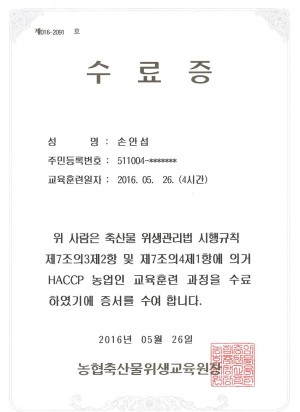
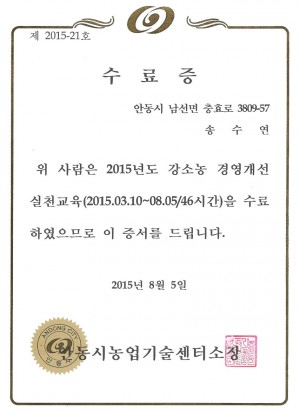
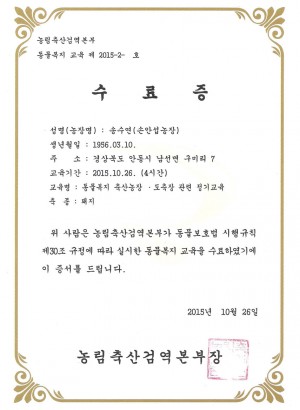
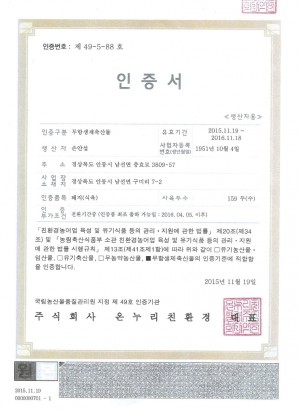
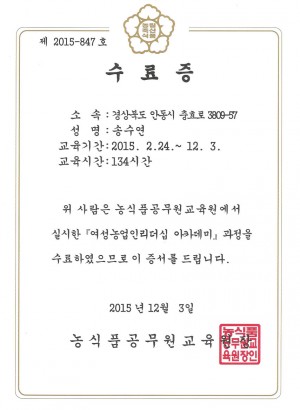
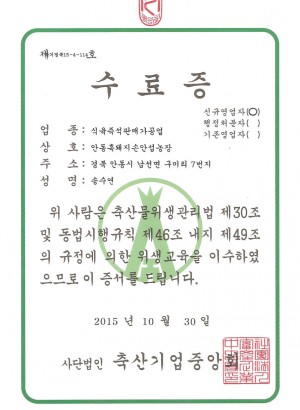
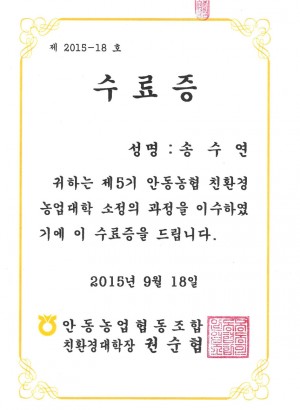
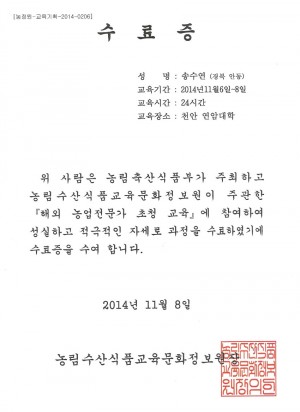

댓글목록
등록된 댓글이 없습니다.